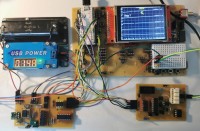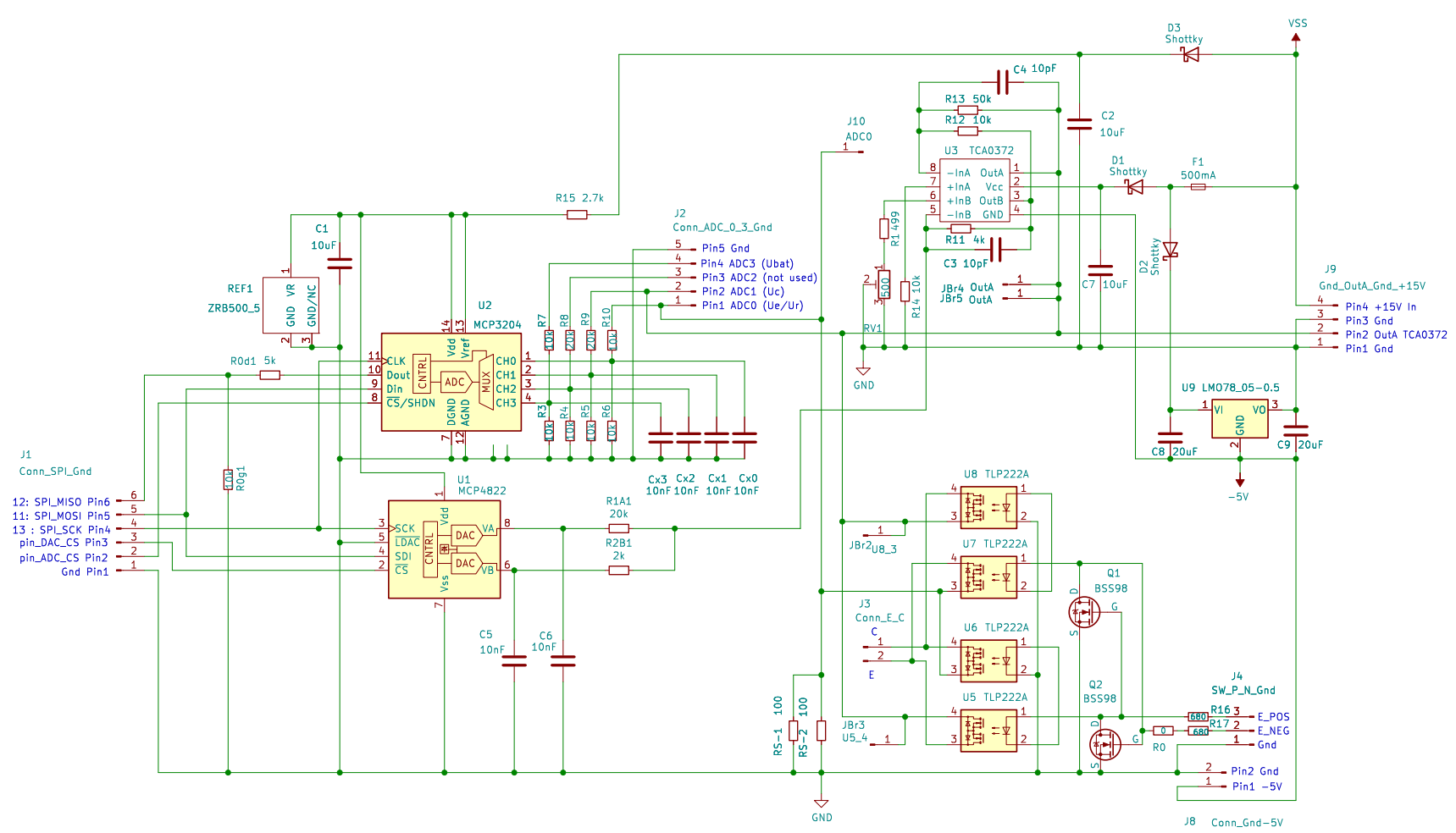Curve Tracer with Raspberry Pico RP2040 / RP2350

Built a compact curve tracer with the Raspberry Pi Pico, ILI9341 touchscreen, and a custom power board — supports bipolar transistors (npn/pnp), diodes, JFETs, and MOSFETs.
Here’s a preview of the curve tracer based on the RP2040. It works with an ILI9341 TFT SPI display, including touch support.
For the tests I used the rapid-development-board for raspberry PICO
https://www.elektormagazine.de/labs/rapid-development-board-for-raspberry-pico
so only for special functions - like currentsource for base-current - I have to develop schematic and pcb.
Alongside this Rapid_Development boards for the Pico, it uses a constant current source built with the HC595, and a new Power Board for driving UCE.
The system runs on 12V, powered by a single 18650 Li-ion cell. The Power Board features a 12-bit ADC (MCP3204), a dual-channel DAC (MCP4822), and a power amplifier (TCA0372).
It supports measurements of standard bipolar transistors (NPN/PNP), diodes (including Zeners < 12V), JFETs, and MOSFETs.
The hardware is nearly complete — next steps are testing the software and the touchscreen interface.
The Schematic Diagram of the UCE-board:
The Schematic Diagram of the UCE-board:

A lot of positions in the menu are also changeable with 2 rotary encoders.
In the next days I will present the new Power-Board for changing Uce with Dual-Dac.
Now I have changed the current-source to 4 bit.
You can change now the base-current from 0 to 150 µA with stepwide 10 µA,
from 0 to 300 µA with stepwide 20µA
and from 0 to 750 µA with stepwide 50 µA.
Update from 29.07.2025 :
I have changed the currentsource with HC595 to a precision current-source with I2C-DAC MCP4725.
The hardware is more complex and a little bit more expensiv (I2C isolator ADUM 5201 , MCP4725) but you have more possibilities:
- precise constant-current-source from 1 µA to about 1.5 mA (4mA?) with minmal stepwide from 1 µA,
- usable as isolated constantcurrent-source with this range 5 ,
- usable as isolated constantvoltage-source from 10 mV to about 16V (R=10k)
- staircase generator for slow frequecies
- ...
Update from 08.08.2025:
The tests with the I2C-DAC MP4725 was sobering:
Offeset between 3 mV and 5 mV, I expected about 1 mV,
the linearity was also bad,
therefore I intend to test it with the SPI-DAC MCP4822 (dual, 12-bit, int. refernce).
But I need an other isolator,
with 4 optocoupler or with ADUM140x.
I used an cheap optocoupler module (HW-399 with TLP281-4) , but ii's very slow:max 15 kHz SPI-fgrequency.
With the more expensive ADUM1400 ( I used not the ADUM1401, because I need for the DAC no MISO-Pin. With the ADUM1400 I can use the 4. pin for changing polarity of the Current/Voltage-source.)
The max. SPI-frequency is with the ADUM 10 Mhz.
I made a small board for the ADUM1601 (smd SO16W) with teh same dimensions and pins like the
HW-399 module, need the NC-Pin for + 5V.
The offset is abaout 1-2mV, the linearity is better (1-1.5%), but I try to correct it with an array( 40095 uint16_t).
The new board for the constant-currentsource is designed and in test.
-



Diskussion (4 Kommentare)